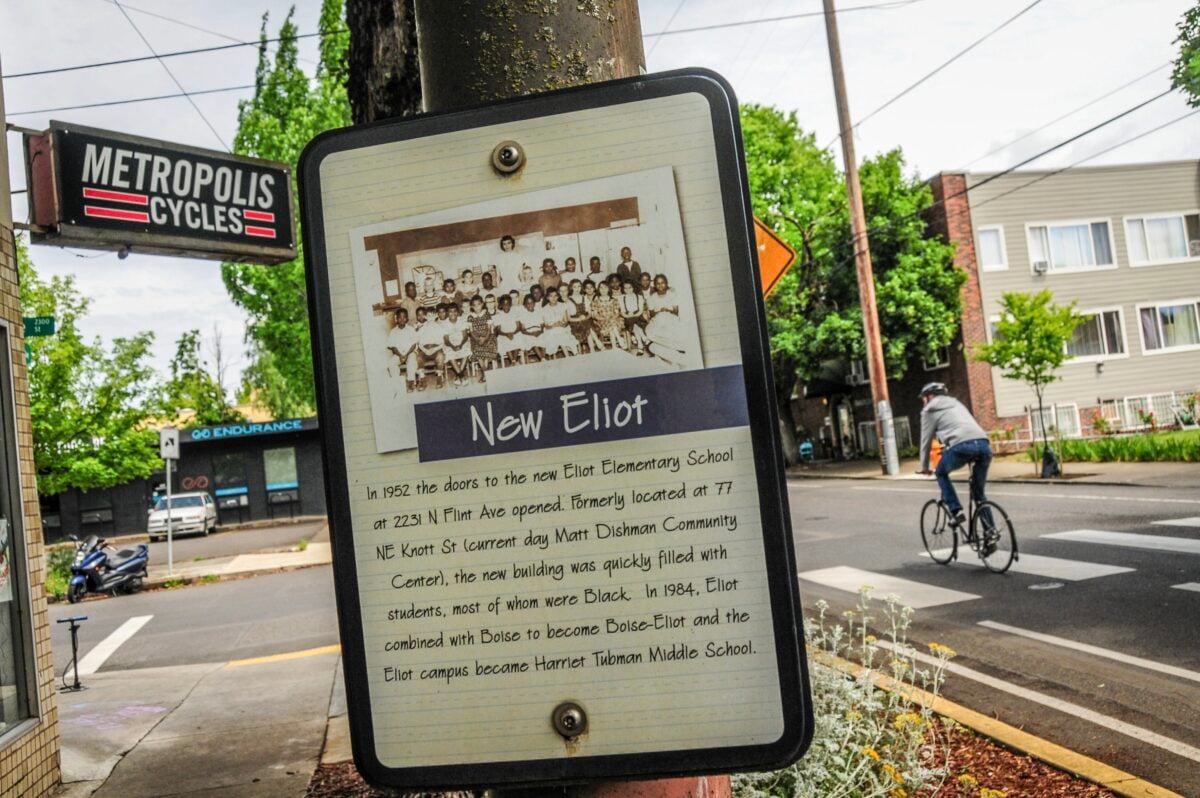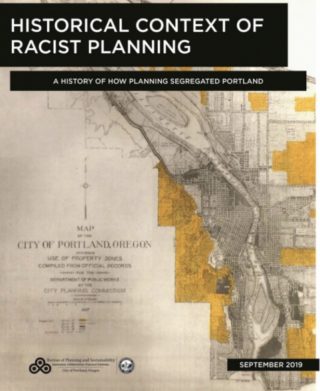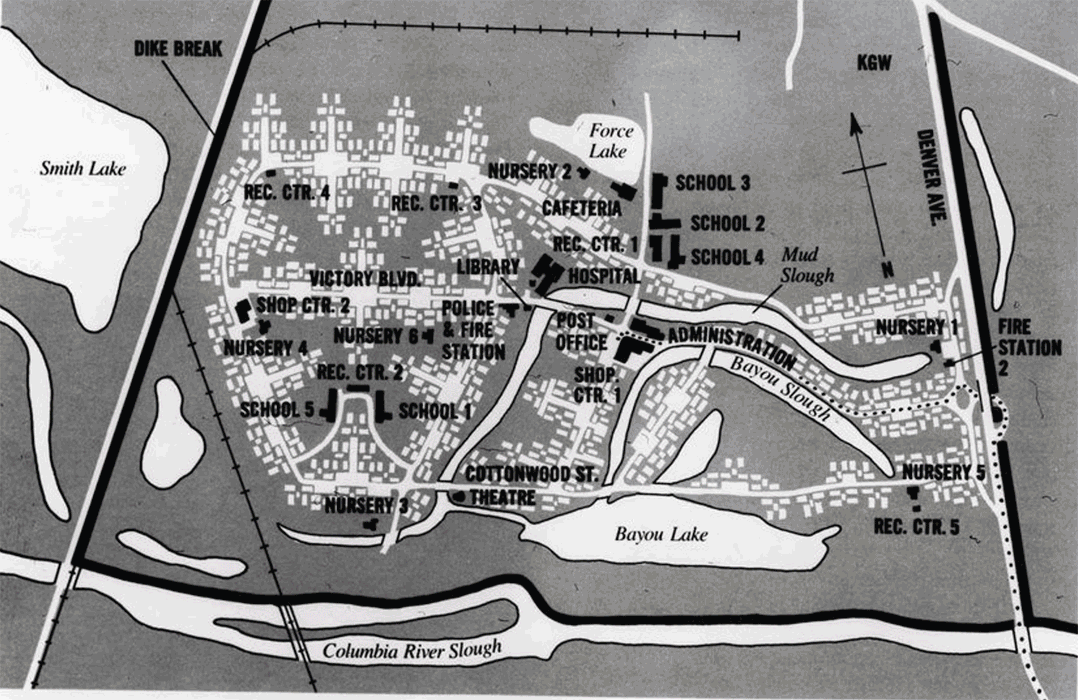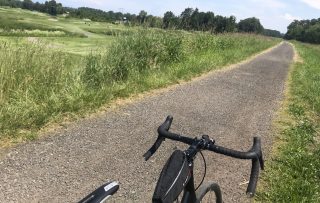
(Photos: Jonathan Maus/BikePortland)
We bike lovers talk a lot about what we ride and how we ride, but we don’t talk enough about where we ride. And I don’t mean comparing “epic” routes in the wilderness. I’m talking about the history of the places we pedal through.
If you ride in Portland there are a few things you should know. If you’ve been here a while, you’ve likely heard some of what I’m about to share. But if you’re new to town, listen up!
And yes, this post is about racism.
There’s a lot of race-related history to uncover about our state (which was formed to exclude Black people and with a vision to be a “perfect white society”) and our city.
Here are just three bits of history to help you on your educational journey…
Portland’s Racist Planning History


That’s not me calling Portland’s planning history racist, that’s the City of Portland itself. Believe it or not, our city has a page on their website devoted to, “How historical racist land use planning contributed to racial segregation and inequity for people of color in Portland.” The meat of the site is a 2019 report that outlines in detail how planners purposely segregated Portland along racial lines.
From what types of housing was allowed to be built to covenants on deeds that intentionally excluded Black and other people of color, the way Portland is built today directly reflects a racist past. Ever notice how some streets you ride on — like Southeast Ankeny through Laurelhurst or along the bluff on North Willamette — are lined with big, single-family homes, while other streets feel much more crowded with multi-story apartments?
I highly recommend taking a few minutes to click through the links on that page, especially this interactive Google Map of racial covenants in Portland. Then plan a bike ride to some of the locations and ponder how the neighborhoods still reflect these planning decisions.
So much of our debates about density, housing, transportation and bike lanes can be tied to this planning history. Know it better and you’ll be more informed for those important discussions.
Advertisement
Vanport
 (Map of Vanport overlayed with Google satellite image)
(Map of Vanport overlayed with Google satellite image)
The path along the Columbia Slough near Portland International Raceway north of Kenton is one of the most popular places to ride in our city. It also has a view of one of the most dramatic and important events in the history of Portland.

72 years ago a flood wiped out a major city that was built where PIR now stands. Yes, the same PIR that has hosted many of your favorite bike races like MTB Short Track, the Cyclocross Crusade, Monday Night PIR, and others.
At its height in the mid 1940s, 40% of Vanport’s 40,000 residents were Black and it was the second largest city in Oregon. When the levees broke on May 30th 1948, 15 people died and 6,300 Black people were displaced.
As detailed by NPR, the aforementioned racist planning that pushed Black people away from many parts of the city, directly contributed to Vanport becoming overcrowded and led to a lack of urgency to protect it from this disaster.
If you want to ride over there and learn more about it, our friends at Pedalpalooza have put together a bike route and page with more information.
North Williams Avenue
Another popular bike route that’s steeped with racial history is North Williams Avenue.
“We have an issue of racism and of the history of this neighborhood. Until we address that history and… the cultural differences we have in terms of respect, we are not going to move very far.”
— Michelle DePass, July 2011
Before Vanport, most of Portland’s Black residents lived in the Albina district east and north of the Broadway Bridge. By 1920, 62% of Portland’s African Americans residents, and 80% of African American families with children, lived near Williams Avenue. This led to a thriving culture of music venues and other Black-owned businesses. At one point it was called the “Black Broadway” because of all the jazz clubs.
The beginning of the end of this era started in the 1960s with discriminatory “urban renewal” plans by the City of Portland. The construction of Memorial Coliseum, Interstate 5, and Emanuel Hospital decimated hundreds of homes and businesses — and the communities that once thrived because of them.
Nine years ago the Portland Bureau of Transportation wanted to build a new bike lane on Williams and this simmering history boiled over. At a meeting for the project in July 2011, longtime residents of the area objected to the bike lane project. Michelle DePass, a woman who was born in the hospital where the meeting was taking place (Legacy Emanuel) and who lived in the area around Williams Avenue all of her life, spoke up. “We have an issue of racism and of the history of this neighborhood,” she said. “Until we address that history and… the cultural differences we have in terms of respect, we are not going to move very far.”
One of the many outcomes of that controversial project was the Historic Black Williams Project, an educational effort (backed by PBOT in partnership with the community) that included a series of signs displayed along the street. If you ride up Williams today, I strongly suggest stopping to read them. They highlight cultural events, Black community leaders, and Black-owned businesses that once thrived along the street.
For links to more great educational resources about Williams Avenue, check out the links on the Black Williams Project website.
There is so much to discover! I find that having a visceral connection to a place — like when I bike through it — inspires me to do the necessary work of learning about how our past has informed the present and how to embrace them in order to create a better future.
I hope you are embracing this moment to gain more knowledge about the places we ride through, no matter what path you’re on.
— Jonathan Maus: (503) 706-8804, @jonathan_maus on Twitter and jonathan@bikeportland.org
— Get our headlines delivered to your inbox.
— Support this independent community media outlet with a one-time contribution or monthly subscription.

